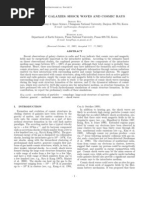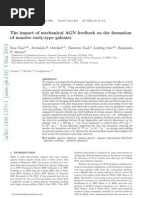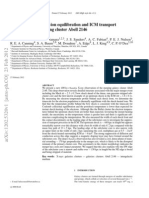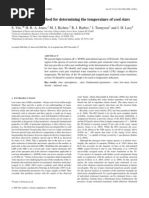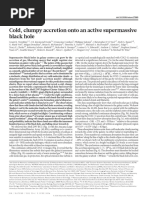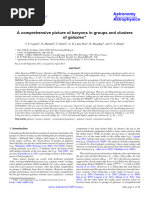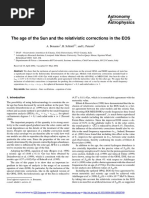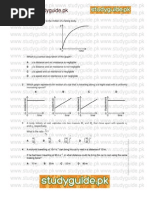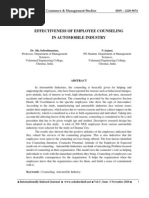B. R. M N H.R. R, P. E. J. N A. C. E, N. W. M, R. A. M, A. N. V, F. C, A. C. F, P. S, C.C. K, S. A. B, J. N. B, M. D, E. E, S. H, C. P. O'd, J.B.R. O, G. T, G.M. V
B. R. M N H.R. R, P. E. J. N A. C. E, N. W. M, R. A. M, A. N. V, F. C, A. C. F, P. S, C.C. K, S. A. B, J. N. B, M. D, E. E, S. H, C. P. O'd, J.B.R. O, G. T, G.M. V
Uploaded by
mkpsrtmCopyright:
Available Formats
B. R. M N H.R. R, P. E. J. N A. C. E, N. W. M, R. A. M, A. N. V, F. C, A. C. F, P. S, C.C. K, S. A. B, J. N. B, M. D, E. E, S. H, C. P. O'd, J.B.R. O, G. T, G.M. V
B. R. M N H.R. R, P. E. J. N A. C. E, N. W. M, R. A. M, A. N. V, F. C, A. C. F, P. S, C.C. K, S. A. B, J. N. B, M. D, E. E, S. H, C. P. O'd, J.B.R. O, G. T, G.M. V
Uploaded by
mkpsrtmOriginal Description:
Original Title
Copyright
Available Formats
Share this document
Did you find this document useful?
Is this content inappropriate?
Copyright:
Available Formats
B. R. M N H.R. R, P. E. J. N A. C. E, N. W. M, R. A. M, A. N. V, F. C, A. C. F, P. S, C.C. K, S. A. B, J. N. B, M. D, E. E, S. H, C. P. O'd, J.B.R. O, G. T, G.M. V
B. R. M N H.R. R, P. E. J. N A. C. E, N. W. M, R. A. M, A. N. V, F. C, A. C. F, P. S, C.C. K, S. A. B, J. N. B, M. D, E. E, S. H, C. P. O'd, J.B.R. O, G. T, G.M. V
Uploaded by
mkpsrtmCopyright:
Available Formats
DRAFT VERSION SEPTEMBER 3, 2013
Preprint typeset using L
A
T
E
X style emulateapj v. 08/13/06
A TEN BILLION SOLAR MASS OUTFLOW OF MOLECULAR GAS LAUNCHED BY RADIO BUBBLES IN THE
ABELL 1835 BRIGHTEST CLUSTER GALAXY
B. R. MCNAMARA
1,2,3
H.R. RUSSELL
1
, P. E. J. NULSEN
3
A. C. EDGE
4
, N. W. MURRAY
7
, R. A. MAIN
1
, A. N. VANTYGHEM
1
, F.
COMBES
5
, A. C. FABIAN
6
, P. SALOME
5
, C.C. KIRKPATRICK
1
, S. A. BAUM
8
, J. N. BREGMAN
9
, M. DONAHUE
10
, E. EGAMI
11
, S.
HAMER
5
, C. P. ODEA
8
, J.B.R. OONK
12
, G. TREMBLAY
13
, G.M. VOIT
10
1
University of Waterloo, Department of Physics & Astronomy, Waterloo, Canada
2
Perimeter Institute for Theoretical Physics, Waterloo, Canada
3
Harvard-Smithsonian Center for Astrophysics
4
Department of Physics, Durham University, Durham, DH1 3LE, UK
5
LObservatoire de Paris, 61 Av. de
LObservatoire, F-75 014 Paris, France
6
Institute of Astronomy, Madingley Road, Cambridge, CB3 0HA, UK
7
Canadian Institute for Theoretical
Astrophysics, University of Toronto, 60 St. George St., Toronto, M5S 3H8, Ontario, Canada
8
School of Physics & Astronomy, Rochester Institute of
Technology, Rochester, NY 14623 USA
9
Department of Astronomy, University of Michigan, 500 Church St. Ann Arbor, MI 48109 USA
10
Department of
Physics & Astronomy, Michigan State University, 567 Wilson Rd., East Lansing, MI 48824 USA
11
Steward Observatory, University of Arizona, 933 N. Cherry
Avenue, Tucson, AZ 85721 USA
12
Sterrewacht Leiden, Universiteit Leiden, P.O. Box 9513, NL-2300 RA Leiden, Netherlands
13
European Southern
Observatory, Karl-Schwarzschild-Strasse 2, 85748 Garching, Germany
Draft version September 3, 2013
ABSTRACT
We report ALMA Early Science observations of the Abell 1835 brightest cluster galaxy (BCG) in the CO
(3-2) and CO (1-0) emission lines. We detect 5 10
10
M
of molecular gas within 10 kpc of the BCG. Its
velocity width of 130 km s
1
FWHM is too narrow to be supported by dynamical pressure. The gas may
instead be supported in a rotating, turbulent disk oriented nearly face-on. The disk is forming stars at a rate of
100 180 M
yr
1
. Roughly 10
10
M
of molecular gas is projected 3 10 kpc to the north-west and to the
east of the nucleus with line of sight velocities lying between 250 km s
1
to +480 km s
1
with respect to the
systemic velocity. Although inow cannot be ruled out, the rising velocity gradient with radius is consistent
with a broad, bipolar outow driven by radio jets or buoyantly rising X-ray cavities. The molecular outow
may be associated with an outow of hot gas in Abell 1835 seen on larger scales. Molecular gas is owing
out of the BCG at a rate of approximately 200 M
yr
1
, which is comparable to its star formation rate. How
radio bubbles lift dense molecular gas in their updrafts, how much gas will be lost to the BCG, and how much
will return to fuel future star formation and AGN activity are poorly understood. Our results imply that radio-
mechanical (radio mode) feedback not only heats hot atmospheres surrounding elliptical galaxies and BCGs, it
is able to sweep higher density molecular gas away from their centers.
Subject headings: galaxies: clusters: general galaxies: cooling ows Active Galactic Nuclei
1. INTRODUCTION
Brightest cluster galaxies (BCGs) are the largest and most
luminous galaxies in the universe. Like normal elliptical
galaxies, their stellar populations are usually old and dor-
mant. BCGs residing in cooling ow clusters are exceptional
(Fabian 1994). Many form stars at rates of several to several
tens of solar masses per year (ODea et al. 2008), fueled by
unusually large reservoirs of cold molecular clouds (Edge et
al. 2001, Salome & Combes 2003). Extreme objects, such as
the Phoenix and the Abell 1835 BCGs, are forming stars at
rates upward of 100 M
yr
1
(McDonald et al. 2012, McNa-
mara et al. 2006, hereafter M06).
Galaxies may be rejuvenated by collisions. However, wet
mergers are unlikely to occur at the centers of rich galaxy
clusters. Molecular clouds and young stars forming in BCGs
are apparently fueled instead by gas cooling from hot atmo-
spheres. Bright nebular emission and young stars are ob-
served preferentially when the central cooling time of a clus-
ter atmosphere falls below 1 Gyr (Heckman 1981, Hu et
al. 1985). High resolution X-ray imaging has since revealed
that nebular emission and star formation appear at a sharp
threshold or transition as the central cooling time falls below
5 10
8
yr (Rafferty et al. 2008, Cavagnolo et al. 2008).
This threshold is tied to cooling instabilities and thermal con-
duction in the hot atmosphere (Voit et al. 2008, Voit 2011,
Gaspari et al. 2012, Guo & Mathews 2013).
Despite strong indications that cold clouds are condensing
out of hot atmospheres, only a few percent of the mass ex-
pected to cool actually does so (Peterson & Fabian 2006).
Feedback from active galactic nuclei (AGN) is almost cer-
tainly suppressing cooling below the levels expected in an
unimpeded cooling ow (reviewed by McNamara & Nulsen
2007, 2012, Fabian 2013). So-called radio-mode or radio-
mechanical feedback, is thought to operate primarily on the
hot, volume-lling atmosphere by increasing its entropy and,
to some degree, by driving the most rapidly cooling gas away
from the center. This mechanism regulates cooling and in turn
governs star formation and the power output of the AGN.
Little is known of the effect of radio-mechanical feedback
on molecular gas. Yet regulating the rate of cold accretion
onto AGN (Pizzolato & Soker 2010, Gaspari et al. 2013) may
be necessary to maintain the feedback loop and suppress star
formation in elliptical galaxies and BCGs. Radio jets located
in powerful radio galaxies interact with ionized gas (eg. Nes-
vadba et al. 2006), which is probably associated with molecu-
lar clouds (Wilman et al. 2006). Furthermore, blueshifted ab-
sorption lines of neutral atomic hydrogen have been observed
toward several radio galaxies (Morganti et al. 2005, 2013),
indicating that radio jets couple to cold clouds and are able
to drive them out at high speed. Flow rates are difcult to
evaluate with absorption measurements, so their full impact
on galaxy evolution is unclear. This will change as sensitive,
subarcsec imaging and emission line spectroscopy of galaxies
with the Atacama Large Millimeter Array (ALMA) become
available.
Here we examine the effects of feedback on the molec-
a
r
X
i
v
:
1
3
0
9
.
0
0
1
3
v
1
[
a
s
t
r
o
-
p
h
.
C
O
]
3
0
A
u
g
2
0
1
3
2
ular gas located near the nucleus of the Abell 1835 BCG.
The BCG contains upward of 5 10
10
M
of molecu-
lar gas (Edge 2001) and star formation proceeding at a rate
of between 100 180 M
yr
1
(M06). The AGN launched
a pair of cavities into its hot atmosphere a few 10
7
yr ago,
each of which is 20 kpc in diameter and projected roughly
20 kpc from the nucleus. The AGNs radio synchrotron lu-
minosity, 3.6 10
41
erg s
1
, is dwarfed by its mechanical
power, L
mec
10
45
ergs
1
(M06), which is typical of radio
AGN (Birzan et al. 2008). Abell 1835 is an archetypal cool-
ing owregulated by radio-mode feedback. The ALMAEarly
Science observations reported here and in a companion paper
on Abell 1664 (Russell et al. 2013), explore for the rst time
at high resolution, the relationships between molecular gas,
star formation, and radio AGN feedback. At the emission line
redshift z = 0.252 (Crawford et al. 1999), 1 arcsec = 3.9 kpc.
2. OBSERVATIONS
We obtained Early Science observations of the BCG with
ALMA at 92 GHz (band 3) and 276 GHz (band 7). At the
clusters redshift the bands are sensitive to the carbon monox-
ide molecules J = 1,0 and J = 3,2 rotational transitions, re-
spectively. The exposures, totaling 60 minutes in band 3 and
60 minutes in band 7, were made between 2012 March 27
and 2012, April 24. The extended array available for Cycle 0
included on average twenty 12 metre dishes, which provided
a spatial resolution of 0.5 arcsec in the CO (3-2) transition
and 1.5 arcsec at the CO (1-0) transition. Baselines extended
to 400 m. This combination yielded a sharp image of the
molecular gas near the nucleus at CO (3-2), and sensitivity on
larger spatial scales at CO (1-0). A bandwidth of 1.875 GHz
per spectral window and two spectral windows per sideband
provided a total frequency range of 7 GHz. We used a
spectral resolution of 0.488 MHz per channel. Channels were
binned together to improve the S/N ratio, yielding a nal res-
olution of 20 km s
1
. The quasar 3C279 was observed for
bandpass calibration and observations of Mars and Titan pro-
vided absolute ux calibration. Observations switched from
Abell 1835 to the nearby phase calibrator J1332+0200 every
10 minutes.
The observations were calibrated using the CASA software
(version 3.3) following the detailed processing scripts pro-
vided by the ALMA science support team. The continuum-
subtracted images were reconstructed using the CASA task
CLEAN assuming Briggs weighting with a robustness param-
eter of 0.5 and with a simple polygon mask applied to each
channel. This provided a synthesized beam of 1.7
1.3
at a PA of 84.1
at CO(1-0) and 0.60
0.48
at a PA of
80.0
at CO(3-2). The rms noise in the line free channels
was 0.6 mJy at CO(1-0) and 1.6 mJy at CO(3-2). Images
of the continuum emission were also produced with CLEAN
by averaging channels free of any line emission. A cen-
tral continuum source is detected in both bands at position
14 01 02.083, +02 52 42.649 with uxes 1.26 0.03 mJy
in band 3 and 0.7 0.1 mJy in band 7. The mm-continuum
source position coincides with the VLA radio nucleus posi-
tion (eg. Hogan et al. in prep). The mm-continuum ux is
also consistent, within a factor of 2, with synchrotron emis-
sion from a at spectrum radio core
1
with 0.84 (Hogan et
al. in prep) suggesting this is the location of the low luminos-
ity AGN.
3. ANALYSIS
1
For the convention f
3.1. Spectra
The total CO (3-2) and CO (1-0) spectra are presented in
Fig. 1. CO emission is centered within 100 km s
1
of the
nebular emission line redshift (Crawford et al. 1999). Each
spectral prole was tted with a single gaussian after the con-
tinuum was subtracted. The emission integral at CO (1-0) is
3.6 0.2 Jy km s
1
. The molecular gas mass was calculated
as,
M
mol
= 1.0510
4
X
CO
1
1+z
S
CO
v
Jy km s
1
D
L
Mpc
2
M
.
(1)
This expression yields a total molecular gas mass of 4.9
0.210
10
M
. The conversion factor between COand molec-
ular gas, X
CO
= 2 10
20
cm
2
(K km s
1
)
1
, is the average
Galactic value (reviewed by Bolatto et al. 2013). The primary
line at zero velocity has a gaussian prole full width at half
maximum FWHM = 1305 km s
1
(corrected for instrumen-
tal broadening). The width is narrower than the BCGs ex-
pected velocity dispersion 250300 km s
1
. Molecular gas
moving with a nearly isotropic velocity pattern cannot be sup-
ported against collapse at such low speeds. The gas may be
supported instead by rotation in a disk projected nearly face-
on. If so, the observed velocity width represents gas speeds
out of the plane (Sec. 4.4).
3.2. Central Molecular Gas and Star Formation
R-band and Far UV images taken with the Hubble Space
Telescope (ODea et al. 2010) are presented in Fig. 2. The R-
band image shows the BCG in relation to its molecular gas,
hot atmosphere, and other neighboring galaxies. The box
superposed on the image indicates the scale of the UV and
CO (3-2) images presented in Fig. 2. A Chandra X-ray im-
age with a similar box superposed is shown in Fig. 2. Most
of the molecular gas lies within the BCGs inner two arcsec
diameter (8 kpc). The UV continuum emission is emerging
from the sites of star formation proceeding at a rate upward of
100 180 M
yr
1
(M06, Egami et al. 2006, Donahue et al.
2011, ). No bright UVor X-ray point source is associated with
the AGN. The CO (3-2) gas coincident with the UV emission
is presumably fueling star formation. The CO and UV emis-
sion are straddled by two bright and presumably rapidly cool-
ing X-ray emission regions oriented to the NE and SW of the
nucleus. No CO emission is detected toward the most rapidly
cooling gas. Two X-ray cavities are located a few arcsec to
the NW and SE of the CO (3-2) emission.
Roughly half of the CO (3-2) ux is emerging from the
inner half arcsec radius of the BCG and is unresolved. As-
suming half of the central molecular gas mass and star for-
mation lie within the same region, we nd the surface den-
sities of star formation and molecular gas to be log
SFR
=
0.87 M
yr
1
kpc
2
and log
CO
= 3.2 M
pc
2
, respectively.
Based on these values, the BCG lies with normal, circum-
nuclear starburst galaxies on the Schmidt-Kennicutt relation
(Kennicutt 1998).
3.3. Velocity Field of the Molecular Gas
We present a grid of CO (3-2) emission spectra correspond-
ing to the grid projected onto the CO (3-2) image in Fig. 3.
The mean line of sight velocities measured with gaussian pro-
le ts are indicated in each grid box. The size of each grid
box corresponds approximately to the FWHM of the synthe-
sized beam. Velocity differences of a few to a few tens of
3
km s
1
are observed across the central structure. No clear ev-
idence for rotation is observed. If the CO (3-2) structure is
a rotating disk, the small velocity gradients and narrow line
width are consistent with it being nearly face-on.
Fig. 4 is similar to Fig. 3, but with a coarser grid intended to
increase the signal in the outer region of the central structure.
The mean line of sight velocities of the emission features are
indicated where signicant CO (3-2) is detected in emission.
The tongue of gas located 1.5 arcsec to the north has a broad
line prole with velocities of 15 to 60 km s
1
. Likewise,
the tongue extending to the west is traveling at a velocity of
70 km s
1
with respect to the bulk of the gas. The gas in the
E-SE (bottom left) grid boxes has velocities similar in magni-
tude but opposite in sign (redshifted) with respect to the cen-
tral emission. The N and W tongues of blueshifted gas are
oriented roughly toward the NW X-ray cavity. The redshifted
gas to the SE is oriented roughly toward the SE X-ray cav-
ity. The tongues of gas appear to be dynamically decoupled
from the central structure. Below we relate this gas to more
extended molecular gas seen in CO (1-0). We interpret these
features as gas lifted out of the central region by the AGN.
We examine the molecular gas velocities on larger scales
using the grid of spectra in CO (1-0) presented in Fig. 5,
which matches the resolution of the telescope conguration.
The sky grid corresponds to spectra shown in the right panel.
The contours represent CO emission and their colors corre-
spond to the color coded velocity stripes superposed on the
spectra. A two dimensional gaussian prole has been tted
to and subtracted from each channel in order to remove the
central emission from the contour map.
The CO (1-0) map reveals tongues of emission projecting
roughly 10 kpc to the N-NW and SE of the nucleus. Their ori-
entations are similar to the smaller, tongue-like features seen
in the CO(3-2) image. Molecular gas traveling at +480 kms
1
in the eastern box is redshifted with respect to the systemic
velocity. A narrower, blueshifted gas velocity component
is seen in the N and NW boxes extending to velocities of
200 km s
1
. The redshifted gas contour north of the nucleus
is signicant only at the 23 level. Present as a small bump
in the nuclear spectrum at a velocity of 300 km s
1
, it is of
marginal signicance and will not be discussed further.
To summarize: blueshifted gas lies exclusively to the N-
NW, while redshifted gas lies primarily to the E-SE. No sig-
nicant high velocity gas is observed in the NE, SW, and W
grid boxes, nor is it observed toward the nucleus. This pat-
tern is consistent with a broad, bipolar ow of molecular gas,
which we discuss in greater detail in Sec. 4.3. While this in-
terpretation seems to be most straightforward, it is not unique.
The gas may in principle have accreted with some net angular
momentum that placed it on nearly circular rather than radial
orbits, so that the gas is in nearly ordered motion about the
BCG.
The ux integrals under the redshifted and blueshifted
emission prole wings are 0.40.2 and 0.270.09 Jy kms
1
,
respectively, giving a total ux integral of 0.70.2 Jy km s
1
.
They correspond to a molecular hydrogen mass of 1.00.3
10
10
M
. The accuracy of the ux integrals are sensitive to
the continuum, particularly in the redshifted emission wing.
A slightly higher mass is observed in the redshifted compo-
nent compared to the blueshifted component, indicating an
asymmetric ow.
4. DISCUSSION
4.1. Bipolar Outow or Inow of Molecular Gas?
Because the high speed molecular gas is observed in emis-
sion, the ALMA observations alone cannot discriminate with
certainty between inow and outow. An inow of molecu-
lar gas from the cooling ow is the most natural explanation.
However, if the gas cooled in a steady accretion ow the high-
est speed gas would be observed toward the nucleus and the
lowest speed gas at larger radii (Lim et al. 2008). We do not
observe this. The highest speed gas shown in Fig. 5 avoids
the nucleus. Assuming the CO (3-2) and CO (1-0) track the
same dynamics, a trend of increasing line-of-sight gas veloc-
ities with increasing radius is observed. The gas to the N-
NW is blueshifted from velocities of a few tens of km s
1
at
radii of 3 kpc to 250 km s
1
at a radius of 10 kpc.
Likewise, the gas to the E-SE is redshifted with velocities of
40 60 km s
1
at 3 kpc, increasing to 480 km s
1
at
10 kpc. The yellow wing at +250 km s
1
in the nuclear
spectrum becomes stronger and redshifted to higher velocities
approaching the eastern grid box. Taken together, the velocity
patterns in both CO (3-2) and CO (1-0) emission are consis-
tent with an accelerating, bipolar outow of molecular gas.
4.2. Driving a Molecular Outow by Radiation Pressure or
Supernovae
Molecular outows are common in ULIRGs, QSOs, and
starburst galaxies (reviewed by Veilleux 2005 and Fabian
2013). Driving mechanisms include radiation pressure on
dust and mechanical winds driven by supernovae. Radiation
from hot stars and AGN will drive out gas when dM/dt
v
CO
<
L
UV
/c. The left hand side is the product of the outow
rate and the gas velocity. The right hand side is the sum of the
UV luminosity from the AGN and stars divided by the speed
of light. The far UV image shown in Fig. 2 reveals no UV
point source associated with the AGN. Stars are producing all
of the UV ux. Based on the far UV ux from ODea et al.
(2010), L
FUV
= 1.85 10
43
erg s
1
, and assuming an outow
rate of 200 M
yr
1
, radiation pressure is too feeble to accel-
erate it by more than 3 orders of magnitude.
The power input by core collapse supernovae, 4
10
43
erg s
1
(M06), is comparable to the kinetic power of the
outow, E
K
10
58
erg, t
out
3 10
7
yr, P
K
10
43
erg s
1
.
However, for supernovae to accelerate the ow, most of their
mechanical energy must be coupled to molecular gas. Little
may be thermalized. Furthermore, their spherical blast pat-
terns would have difculty driving a bipolar ow. The ad-
ditional work that must be done against gravity and the sur-
rounding pressure of the hot atmosphere would hinder a sus-
tained and substantial bipolar ow. While supernovae are un-
likely to accelerate the ow appreciably, they may puff-up the
disk and increase the cross section between the molecular gas
and the AGN, discussed further in Sec. 4.4.
4.3. A Radio-AGN Driving a Molecular Outow
The mechanical power of the jet estimated from the X-ray
cavities, P
cav
10
45
erg s
1
, is by far the most potent power
source. Although the jet momentum is insufcient to lift the
gas, the kinetic energy of the cold ows is only 1% of the
total energy output of the AGN and could easily be supplied
by it. The gas appears to be moving along and behind the
rising bubbles, providing circumstantial evidence connecting
them to the molecular ow. Moreover, the molecular ow
speeds are consistent with the buoyancy speeds of the cavi-
ties. Bubbles rise at a substantial fraction of the atmospheres
4
sound speed (Churazov et al. 2001), which for Abell 1835 is
1000 km s
1
.
Despite ample AGN power, the bubbles must, in the end,
couple to the gas and lift it out of the galaxy. By Archimedes
principle, they would be unable to lift more molecular gas
than hot gas they displace, which is 3 10
10
M
. Ris-
ing X-ray bubbles not only displace gas, they draw metal-
enriched X-ray plasma out from cluster centers at rates of tens
to hundreds of solar masses per year (Simionescu et al. 2008,
Werner et al. 2010, Kirkpatrick et al. 2009, 2011). Abell
1835s AGN is lifting 410
10
M
of hot gas out along the
bubble axis (Kirkpatrick in preparation), a value that is a few
times larger than the mass of the molecular outow and close
to our estimate of the amount of gas displaced by the bubbles.
Nevertheless, these estimates are uncomfortably close to the
outowing molecular gas mass, and would imply surprisingly
efcient coupling between the radio jets and bubbles and both
the hot, 410
7
K, tenuous, 0.1 cm
3
, volume-lling plasma
and the 30 K molecular gas.
Understanding how the molecular gas couples to the bub-
bles is a challenging problem. Both the hot and cold ows
may be related. Hydrodynamical simulations have shown that
ram pressure associated with high Eddington ratio jets are
able to couple efciently to both the cold and warm phases
of the interstellar medium of galaxies and drive some of it
out (e.g., Wagner, Bicknell, & Umemura 2012). Whether the
molecular clouds in Abell 1835 are being accelerated by jets
or are being lifted in the updraft of the X-ray cavities (e.g.,
Pope et al. 2010) is unclear. Observation suggest the lat-
ter. Molecular gas is more readily coupled to the hot gas if
the density contrast is low. In section 4.4, the density in the
molecular disk is estimated to be 1000 times that of the hot
phase. However, for a turbulent velocity of 100 km s
1
, if the
dynamical pressure of the molecular gas matched the pressure
of the hot gas, it would only be 50 times as dense. The high
level of turbulence maintained by rapid ongoing star forma-
tion may help to explain how the tenuous hot gas is able to lift
molecular gas.
The bubbles would be able to lift the mass more easily if
the molecular hydrogen cooled out of hotter gas rising up in
the bubbles wakes, similar to those discussed by Revaz et
al. (2008). The mean plasma density and temperature in the
central 20 kpc of the cluster is 0.1 cm
3
and T = 2.5 keV,
respectively. The cooling time of this gas, assuming solar
metal abundance, is 0.22 Gyr, which is longer than the time it
would take to displace the gas to the observed projected dis-
tance of about 10 kpc. However, any lower entropy gas at,
say, 1 keV in local pressure equilibrium would have a density
of 0.25 cm
3
, and its cooling time would be only 2 10
7
yr.
This timescale is comparable to the rise times of the bubbles
and molecular gas. Therefore, the plasma lifted out of the cen-
ter with temperatures of 1 keV and below would have time to
cool behind the cavities. This plasma would have densities
only a few times larger than the ambient plasma. However,
it would be several orders of magnitude less dense than the
molecular gas itself, making it much easier to lift and accel-
erate to the speeds observed. This mechanism may help to
explain the dearth of gas cooling below 1 keV in Abell 1835
and other clusters (Peterson et al. 2003).
The outow rate is a poorly dened quantity. We estimate it
by dividing the mass of the outowing molecular gas by either
the time for the bubbles to rise by buoyancy to their current
projected distances or by the time required for the molecular
gas to reach its current projected distance from the nucleus. A
range of velocities and distances are observed, with timescales
between 3510
7
yr. They imply an outow rate of 200
300 M
yr
1
.
This rate is comparable to the BCGs mean star formation
rate. The center of the galaxy could be swept of its molecular
gas in only a few hundred million years, starving the black
hole and starburst of needed fuel. However, the fate of most
of the gas is unclear. The one dimensional outow speeds are
somewhat larger than the circular speed of the stars. If the
molecular gas is owing ballistically, most of it should return
unless it evaporates into the hot atmosphere. If the molecular
gas is coupled to the rising bubbles or continues to be ac-
celerated by the AGN, it could travel further. However, if the
molecular gas formed behind the bubbles in a cooling wake, it
is unlikely to evaporate into the hot medium. Most may return
in a circulation ow or "fountain" of molecular gas, perhaps
similar to that inferred in NGC 1275 (Lim et al. 2008, Salome
et al. 2006, 2011). The cycling of molecular gas in BCGs and
normal elliptical galaxies could have a signicant impact on
their star formation and AGN histories.
4.4. Dynamics of the Central Molecular Gas
The dynamical state and high average density of the molec-
ular gas in the central kiloparsec of the BCG have signicant
implications for this system. The lack of evidence for rotation
in the molecular gas implies that, if the gas is rotationally sup-
ported, its rotation axis must be very close to our line of sight.
At the same time, the full velocity width at half maximum for
the molecular gas in this region is 130 km s
1
, corresponding
to a line of sight velocity dispersion of
los
55 km s
1
and
a one-dimensional turbulent velocity v
T
=
los
. This suggests
the gas lies in a face-on disk.
This high turbulent velocity is consistent with the disk being
marginally gravitationally unstable; the Toomre Q parameter
is
Q=
v
c
v
T
Gr
g
(r)
0.43
v
c
400 km s
1
v
T
55 km s
1
R
e
2 kpc
g
(R
e
)
0.4 g cm
2
1
, (2)
where we have scaled to the radius R
e
enclosing half the CO
(3-2) ux, which we assume to enclose half the mass. We have
also scaled the circular velocity at that radius to 400 km s
1
.
The circular velocity would have to exceed 940 km s
1
to sta-
bilize the gas disk. We noted in Section 3.2 that the BCG
lies with starburst galaxies on the Schmidt-Kennicutt relation;
galaxies on that relation have Q 1.
We note that for a gas to dust mass ratio of 100, the surface
density (
g
= 1600 M
pc
2
) corresponds to an A
v
100.
The weight per unit area under self-gravity, or dynamical
pressure of this gas is
p
dyn
=
2
G
2
g
1.710
8
dyne cm
2
. (3)
This is substantially higher than the thermal pressure of the
hot gas.
Being marginally gravitationally stable implies that the disk
scale height H = (v
T
/v
c
)r, or about 275 pc at R
e
= 2 kpc.
The mean density at that radius is then
c
=
g
/(2H)
2.4 10
22
g cm
3
, or n
H
100. This mean density is
somewhat higher than the mean density in massive Milky
Way GMCs. The Toomre mass of molecular clouds is then
M
T
= H
2
g
1.4 10
8
M
. The turbulent pressure of the
5
cold gas is
p
turb
=
c
v
2
T
0.710
8
dyne cm
2
, (4)
i.e., the turbulent motions provide enough pressure to support
the disk in a marginally stable state.
Turbulence is believed to decay on a dynamical time. Main-
taining the turbulence in A1835 would then require a turbulent
power of
P
turb
=
3M
g
v
2
T
2R
e
/v
c
310
43
erg s
1
.
This is similar to the total luminosity supplied by super-
novae, if the star formation rate is 200 M
yr
1
, L
Sne
=
610
43
(
M
/200 M
yr
1
) erg s
1
, if the supernovae are well
coupled to the molecular gas, and if they do not radiate more
than 50% of their energy away. We observe that Q 1,
so we expect large scale features such as spiral arms or bars
in the disk to develop. These features will transport angular
momentum efciently inward, down to sub-parsec scales, e.g.
Hopkins & Quataert (2010, 2011).
4.5. Origin of the Molecular Gas
Molecular gas associated with starburst galaxies, ULIRGS,
and QSOs is usually attributed to wet mergers. The center
of a rich cluster with a large velocity dispersion is a dif-
cult place for this to happen. Ram pressure experienced by
a plunging, gas-rich donor galaxy will strip most of its atomic
gas and much of its molecular gas before it reaches the BCG
(Combes 2004, Roediger & Brggen 2007, Kirkpatrick et al.
2009, Ruszkowski et al. 2012). Molecular gas, being dense
and centrally concentrated, is tightly bound and more resilient
to stripping than atomic gas. Therefore, short of a direct col-
lision, a plunging galaxy should retain much of its molecular
gas (Young et al. 2011). Furthermore, the BCGs molecu-
lar gas mass exceeds by large factors that of most galaxies
in clusters at its epoch. The likelihood that such a galaxy, if
present, would hit the BCG directly and deposit its molecular
gas at the low speeds observed seems remote.
The molecular gas in Abell 1835 probably cooled from the
hot atmosphere and settled into the BCG. Hot atmospheres
whose central cooling time falls below 10
9
yr frequently
harbor 10
9
10
10
M
of molecular gas (Edge 2001, Salome
& Combes 2003). BCGs in Coma-like clusters with long cen-
tral cooling times do not. Abell 1835 is the extreme of this
class. Its cooling rate of
<
140 M
yr
1
(Sanders et al. 2010)
would supply the molecular gas in a few hundred Myr, com-
parable to the age of the starburst (M06). Molecular gas con-
densing from a hot atmosphere will achieve lower velocities
and lower specic angular momentum than gas arriving by
merger (Lim et al. 2008). Sensitive ALMA observations in
future may detect molecular gas cooling and owing in from
the hot atmosphere and returning in a circulation ow.
5. CONCLUSIONS
We have shown that the BCG in Abell 1835 contains
roughly 5 10
10
M
of molecular gas, most of which is as-
sociated with stars forming at
>
100 M
yr
1
, possibly in
a thick, face-on disk. We discovered a 10
10
M
bipolar
molecular outow traveling between 250 and +480 km s
1
that is being accelerated most likely by mechanical energy as-
sociated with rising X-ray bubbles. Whether the bubbles ac-
celerated the molecular clouds directly, or whether the molec-
ular clouds cooled out of the hot plasma in the updraft be-
hind the bubbles isnt clear. Both mechanisms have problems.
The mass of hot plasma being displaced and dragged out by
the bubbles, 3410
10
M
, is uncomfortably similar to the
10
10
M
of molecular gas they apparently lifted. Direct up-
lift would require strong coupling between dense, molecular
clouds and the tenuous atmosphere, which may be difcult to
achieve. The problem would be lessened if the molecular gas
cooled in updraft behind the bubbles, or if the outow mass
were lower than we have estimated. For example, the X
CO
parameter may be lower than the Galactic value we have as-
sumed.
Our result has broader implications. Molecular gas abun-
dance is a sharply declining function of a galaxys stellar
mass. Above 3 10
10
M
most are elliptical galaxies. Of
these, only 22% contain molecular gas, and only at levels
between 10
7
10
9
M
(Young et al. 2011). On the other hand,
radio power is a steeply increasing function of stellar mass
(Best et al. 2005, Best & Heckman 2012). Their detection
fraction rises from 0.01% at 3 10
10
M
to upward of 30%
at 5 10
11
M
(Best et al. 2005). Therefore, molecular gas
mass must also be a declining function of radio power. While
a number of environmental factors may be contributing to this
decline (Young et al. 2011), the radio source itself may play
a role, albeit a complicated one. Radio synchrotron power
represents only a small fraction of a radio AGNs total me-
chanical power (Birzan et al. 2008). Therefore, relatively low
power radio synchrotron sources can be mechanically potent.
Mechanical heating of hot atmospheres in elliptical galaxies
by radio mode feedback is likely to be the primary mechanism
maintaining red and dead" elliptical galaxies (e.g., Bower et
al. 2006, Croton et al. 2006). However, if AGN are fed by
cold molecular clouds, a feedback loop may be difcult to sus-
tain unless the radio jets are also regulating the rate of cold ac-
cretion. The relatively efcient coupling between the molecu-
lar gas and radio bubbles implied by the Abell 1835 observa-
tion suggests that radio mode feedback may also regulate the
amount of molecular gas reaching the nuclei of galaxies.
BRM thanks Tom Jones and Christine Jones for helpful
comments. HRR and BRM acknowledge generous nan-
cial support from the Canadian Space Agency Space Sci-
ence Enhancement Program. BRM, RAM, HRR, and ANV
acknowledge support from the Natural Sciences and Engi-
neering Research Council of Canada. ACE acknowledges
support from STFC grant ST/I001573/1 PEJN is supported
by NASA grant NAS8-03060. We thank the ALMA sci-
entic support staff members Adam Leroy and Stphane
Leon. The paper makes use of the following ALMA
data: ADS/JAO.ALMA#2011.0.00374.S. ALMA is a partner-
ship of ESO (representing its member states), NSF (USA)
and NINS (Japan), together with NRC (Canada) and NSC
and ASIAA (Taiwan), in cooperation with the Republic of
Chile. The Joint ALMA Observatory is operated by ESO,
AUI/NRAO and NAOJ. The National Radio Astronomy Ob-
servatory is a facility of the National Science Foundation op-
erated under cooperative agreement by Associated Universi-
ties, Inc. This paper is dedicated to Jim Pisano, who helped
make ALMA the marvelous facility it is.
6
APPENDIX
THE CO TO H2 CONVERSION FACTOR
CO traces traces molecular hydrogen which, lacking a permanent electric dipole moment, radiates inefciently. The value of
the CO to molecular gas conversion factor, commonly referred to as X
CO
, is the prime uncertainty in our mass estimates. Absent
an alternative, most investigators adopt the value for the Milky Way Galaxy and other local disk galaxies, where the CO (1-0)
emission feature is usually optically thick. However, the true value depends on environmental factors, such as the gas phase metal
abundance, which may depart from the average Galactic value. A lower gas phase metal abundance gives a higher mass ratio of
hydrogen to CO. Therefore, applying the Galactic X
CO
to low metal abundance gas would underestimate of the total molecular
gas mass. On the other hand, if the molecular gas optically thin or nearly so, as it may be in turbulent ows and massive starburst
galaxies, the Galactic X
CO
would over estimate the molecular gas mass. Other factors that affect X
CO
including, the temperature,
density, and dynamics of the gas, which in most situations are poorly understood (Bolatto et al. 2013).
The metallicity of the cooling X-ray plasma in Abell 1835 lies between 0.5-0.8 times the Solar metallicity within 20 kpc of
the nucleus. This alone would indicate that adopting the Galactic X
CO
as we have done should provide a reasonable if not a
conservative underestimate of the molecular gas mass. However, Abell 1835 is a starburst galaxy. There are indications that
X
CO
in starburst galaxies may be depressed below the Galactic value. The central gas density, 2000 M
pc
2
, lies midway
between normal spirals and starbursts. The gas density of the outow, away from the bulk of star formation, has a surface density
of 100 M
pc
2
, which is comparable to normal spiral galaxies and to the Milky Way (Bolatto et al. 2013). It is therefore
possible that the X
CO
value for the molecular gas located near the nucleus may be suppressed by a small factor with respect to
the molecular gas in the outow. On the other hand, indications are that X
CO
may be suppressed in turbulent winds, where the
molecular gas becomes optically thin (Bolatto 2013). Abell 1835s outow velocity is lower than those in quasars (e.g., Maiolino
et al. 2012, Feruglio et al. 2010). Taken together, we have no reason to expect X
CO
to depart signicantly from the Galactic value
in this system. Nevertheless, should X
CO
lie a factor of several below the Galactic value, the ow would still exceed 10
9
M
.
This would not qualitatively alter our result.
References
Best, P. N., Kauffmann, G., Heckman, T. M., et al. 2005, MNRAS, 362, 25
Best, P. N., & Heckman, T. M. 2012, MNRAS, 421, 1569
Brzan, L., McNamara, B. R., Nulsen, P. E. J., Carilli, C. L., & Wise, M. W. 2008, ApJ, 686, 859
Bower, R. G., Benson, A. J., Malbon, et al. 2006, MNRAS, 370, 645
Bolatto, A. D., Wolre, M., & Leroy, A. K. 2013, arXiv:1301.3498
Cavagnolo, K. W., Donahue, M., Voit, G. M., & Sun, M. 2008, ApJ, 683, L107
Churazov, E., Brggen, M., Kaiser, C. R., Bhringer, H., & Forman, W. 2001, ApJ, 554, 261
Combes, F. 2004, Recycling Intergalactic and Interstellar Matter, 217, 440
Crawford, C. S., Allen, S. W., Ebeling, H., Edge, A. C., & Fabian, A. C. 1999, MNRAS, 306, 857
Croton, D.J. et al. 2006, MNRAS, 365, 11
Donahue, M., de Messires, G. E., OConnell, R. W., et al. 2011, ApJ, 732, 40
Edge, A. C. 2001, MNRAS, 328, 762
Egami, E., Misselt, K. A., Rieke, G. H., et al. 2006, ApJ, 647, 922
Fabian, A. C. 1994, ARA&A, 32, 277
Fabian, A.C. 2013, ARA&A, 50, 455
Feruglio, C., Maiolino, R., Piconcelli, E., et al. 2010, A&A, 518, L155
Gaspari, M., Ruszkowski, M., & Sharma, P. 2012, ApJ, 746, 94
Gaspari, M., Ruszkowski, M., & Oh, S. P. 2013, MNRAS, 432, 3401
Guo, F., & Mathews, W. G. 2013, arXiv:1305.2958
Heckman, T. M. 1981, ApJ, 250, L59
7
Hopkins, P. F. & Quataert, E. 2010, MNRAS, 407, 1529
Hopkins, P. F. & Quataert, E. 2011, MNRAS, 415, 1027
Hu, E. M., Cowie, L. L., & Wang, Z. 1985, ApJS, 59, 447
Kennicutt, R. C., Jr. 1998, ApJ, 498, 541
Kirkpatrick, C. C., McNamara, B. R., & Cavagnolo, K. W. 2011, ApJ, 731, L23
Kirkpatrick, C. C., Gitti, M., Cavagnolo, K. W., et al. 2009, ApJ, 707, L69
Lim, J., Ao, Y., & Dinh-V-Trung 2008, ApJ, 672, 252
Maiolino, R., Gallerani, S., Neri, R., et al. 2012, MNRAS, 425, L66
McDonald, M., Bayliss, M., Benson, B. A., et al. 2012, Nature, 488, 349
McNamara, B. R., & Nulsen, P. E. J. 2007, ARA&A, 45, 117
McNamara, B.R., Nulsen, P.E.J., 2012, NJP, 14, 055023
McNamara, B. R., Rafferty, D. A., Brzan, L., et al. 2006, ApJ, 648, 164
Morganti, R., Tadhunter, C. N., & Oosterloo, T. A. 2005, A&A, 444, L9
Morganti, R., et al. 2013, Science, in press
Nesvadba, N. P. H., Lehnert, M. D., Eisenhauer, F., et al. 2006, ApJ, 650, 693
ODea, C. P., Baum, S. A., Privon, G., et al. 2008, ApJ, 681, 1035
ODea, K. P., Quillen, A. C., ODea, C. P., et al. 2010, ApJ, 719, 1619
ONeill, S. M., & Jones, T. W. 2010, ApJ, 710, 180
Peterson, J. R., & Fabian, A. C. 2006, Phys. Rep., 427, 1
Peterson, J. R., Kahn, S. M., Paerels, F. B. S., et al. 2003, ApJ, 590, 207
Pizzolato, F. & Soker, N. 2010, MNRAS, 408, 961
Pope, E. C. D., Babul, A., Pavlovski, G., Bower, R. G., & Dotter, A. 2010, MNRAS, 406, 2023
Rafferty, D. A., McNamara, B. R., & Nulsen, P. E. J. 2008, ApJ, 687, 899
Revaz, Y., Combes, F., & Salom, P. 2008, A&A, 477, L33
Roediger, E., & Brggen, M. 2007, MNRAS, 380, 1399
Ruszkowski, M., Bruggen, M., Lee, D., & Shin, M.-S. 2012, arXiv:1203.1343
Sanders, J. S., Fabian, A. C., Smith, R. K., & Peterson, J. R. 2010, MNRAS, 402, L11
Salome, P., & Combes, F. 2003, A& A, 412, 657
Salom, P., Combes, F., Edge, A. C., et al. 2006, A&A, 454, 437
Salom, P., Combes, F., Revaz, Y., et al. 2011, A&A, 531, A85
Simionescu, A., Werner, N., Finoguenov, A., Bhringer, H., & Brggen, M. 2008, A&A, 482, 97
Veilleux, S., Cecil, G., & Bland-Hawthorn, J. 2005, ARA&A, 43, 769
8
Voit, G. M. 2011, ApJ, 740, 28
Voit, G. M., Cavagnolo, K. W., Donahue, M., et al. 2008, ApJ, 681, L5
Wagner, A. Y., Bicknell, G. V., & Umemura, M. 2012, ApJ, 757, 136
Werner, N., Simionescu, A., Million, E. T., et al. 2010, MNRAS, 407, 2063
Wilman, R. J., Edge, A. C., & Swinbank, A. M. 2006, MNRAS, 371, 93
Young, L. M., Bureau, M., Davis, T. A., et al. 2011, MNRAS, 414, 940
9
FIG. A1. CO (1-0) and CO (3-2) spectra on the left and right, respectively. The spectra were extracted from regions measuring 66 arcsec.
10
FIG. A2. Upper left: Hubble Space Telescope F702W WFPC2 image of the BCG and surrounding galaxies in Abell 1835. The red box indicates the scale
of the CO (3-2) image at lower left. The image is sensitive to both the old and young stellar populations and accompanying line emission. Upper right: Chandra
X-ray image of the hot atmosphere surrounding the BCG. A smooth X-ray background has been subtracted. The blue box indicates the location and scale of the
CO (3-2) and UV images in the lower panels. X-ray cavities inated by the radio AGN (M06) are seen to the northwest and southeast near the edges of the box.
The bright regions to the northeast and southwest of center are the locations of gas with the shortest cooling time where the atmosphere is cooling rapidly. Lower
left: CO (3-2) image. The oval at lower left indicates the beam size, shape, and scale in arcseconds and kiloparsecs. The contours represent 3, +3, +6, +9....
Lower right: Far ultraviolet continuum image through lter F165LP ACS Solar Blind Channel. Note the absence of a nuclear point source associated with an
AGN. Essentially all of the continuum is from the young stars.
11
FIG. A3. CO (3-2) images with a grid of apertures corresponding to the spectra shown in the right panel. The extractions are 0.6 arcsec on a side,
corresponding to the resolution of the synthesized beam. The velocity centroids and their errors are indicated in each box.
FIG. A4. Similar to Fig. 3 but with 1 arcsec extraction apertures that extend into the fainter outer reaches of the central gas structure. The red box corresponds
to the outer edge of the grid region shown in the CO (1-0) map in Fig. 5
12
FIG. A5. Left panel shows a colorscale image of CO (1-0) emission with color contours divided into separate velocity bins. The contours are integrated
intensity in particular velocity ranges with +2, 3, 4. dark blue ( 210 to 150 km s
1
, cyan (150 to 110 km s
1
), yellow (70 to 270 km s
1
), red
(270 to 470 km s
1
). Right panel shows spectral extractions 1.81.8 arcsec on a side, roughly corresponding to the CO (1-0) beam size. The colors superposed
on the spectra correspond to the velocity contours. This gure shows that the high velocity molecular gas avoids the nucleus; higher speeds are observed at larger
radii, indicating outow. The black dotted circles show the locations of the X-ray bubbles. The molecular gas appears to be drawn up behind the rising bubbles.
You might also like
- AISC DG31 Example 003Document14 pagesAISC DG31 Example 003alejandro mantillaNo ratings yet
- Fueling The Central Engine of Radio Galaxies: II. The Footprints of AGN Feedback On The ISM of 3C 236Document14 pagesFueling The Central Engine of Radio Galaxies: II. The Footprints of AGN Feedback On The ISM of 3C 236mkpsrtmNo ratings yet
- Torsten A. Ensslin Et Al - Signatures in A Giant Radio Galaxy of A Cosmological Shock Wave at Intersecting Filaments of GalaxiesDocument4 pagesTorsten A. Ensslin Et Al - Signatures in A Giant Radio Galaxy of A Cosmological Shock Wave at Intersecting Filaments of GalaxiesLukoeNo ratings yet
- David S.Meier, Jean L. Turner and Sara C. Beck - Molecular Gas and The Young Starburst in NGC 5253 RevisitedDocument9 pagesDavid S.Meier, Jean L. Turner and Sara C. Beck - Molecular Gas and The Young Starburst in NGC 5253 RevisitedSale20No ratings yet
- Div Class Title Models of Agn Feedback DivDocument8 pagesDiv Class Title Models of Agn Feedback Divtuvm52815No ratings yet
- M. Casse Et Al - Hypernovae/Gamma-Ray Bursts in The Galactic Center As Possible Sources of Galactic PositronsDocument4 pagesM. Casse Et Al - Hypernovae/Gamma-Ray Bursts in The Galactic Center As Possible Sources of Galactic PositronsTuoma2No ratings yet
- Apj 714 1 758Document14 pagesApj 714 1 758mkpsrtmNo ratings yet
- Prateek Sharma: Preprint Typeset Using L TEX Style Emulateapj v. 04/20/08Document15 pagesPrateek Sharma: Preprint Typeset Using L TEX Style Emulateapj v. 04/20/08Balaji VenkatNo ratings yet
- Nature 04912Document3 pagesNature 04912Sudip ChakrabortyNo ratings yet
- In Support of InflationDocument6 pagesIn Support of Inflationsscript14No ratings yet
- El Rendimiento Energético Del UniversoDocument9 pagesEl Rendimiento Energético Del Universodana_spikeNo ratings yet
- Quasars Probing Quasars. Iii. New Clues To Feedback, Quenching, and The Physics of Massive Galaxy FormationDocument27 pagesQuasars Probing Quasars. Iii. New Clues To Feedback, Quenching, and The Physics of Massive Galaxy FormationMremefNo ratings yet
- Svensmark H. 2006 - Imprint of Galactic Dynamics On Earth's ClimateDocument5 pagesSvensmark H. 2006 - Imprint of Galactic Dynamics On Earth's ClimateErik MartinezNo ratings yet
- Dongsu Ryu and Hyesung Kang - Clusters of Galaxies: Shock Waves and Cosmic RaysDocument8 pagesDongsu Ryu and Hyesung Kang - Clusters of Galaxies: Shock Waves and Cosmic RaysPogz1995No ratings yet
- Magnetically Controlled Outflows From Hot JupitersDocument17 pagesMagnetically Controlled Outflows From Hot JupitersRiska Wahyu RomadhoniaNo ratings yet
- Powerful Multiphase Outflows in The Central Region of Cygnus ADocument13 pagesPowerful Multiphase Outflows in The Central Region of Cygnus AWillian CostaNo ratings yet
- AGN Feedback in Galaxy Groups: A Joint GMRT/X-ray StudyDocument4 pagesAGN Feedback in Galaxy Groups: A Joint GMRT/X-ray StudymkpsrtmNo ratings yet
- Stefano Borgani and Andrey Kravtsov - Cosmological Simulations of Galaxy ClustersDocument46 pagesStefano Borgani and Andrey Kravtsov - Cosmological Simulations of Galaxy ClustersPogz1995No ratings yet
- Iau 303 PaperDocument3 pagesIau 303 PaperSofía GallegoNo ratings yet
- The Impact of Mechanical AGN Feedback On The Formation of Massive Early-Type GalaxiesDocument12 pagesThe Impact of Mechanical AGN Feedback On The Formation of Massive Early-Type GalaxiescrocoaliNo ratings yet
- J.-U. Pott Et Al - Search For Dense Molecular Gas in Two QSO Host Galaxies (Research Note)Document4 pagesJ.-U. Pott Et Al - Search For Dense Molecular Gas in Two QSO Host Galaxies (Research Note)LukoeNo ratings yet
- Improved Bounds On Violation of The Strong Equivalence PrincipleDocument6 pagesImproved Bounds On Violation of The Strong Equivalence PrincipleahsbonNo ratings yet
- Epjconf Ohp2010 03005Document5 pagesEpjconf Ohp2010 03005Anonymous b2k9ABe7eNo ratings yet
- Stabilizing Cloud Feedback Dramatically Expands The Habitable Zone of Tidally Locked PlanetsDocument7 pagesStabilizing Cloud Feedback Dramatically Expands The Habitable Zone of Tidally Locked PlanetssupertierraNo ratings yet
- (Clowe) A Direct Empirical Proof of The Existance of Dark MatterDocument5 pages(Clowe) A Direct Empirical Proof of The Existance of Dark MatterBhvzchhnNo ratings yet
- Shock Fronts, Electron-Ion Equilibration and ICM Transport Processes in The Merging Cluster Abell 2146Document20 pagesShock Fronts, Electron-Ion Equilibration and ICM Transport Processes in The Merging Cluster Abell 2146EntropyPrincipleNo ratings yet
- E T. L, D N, C A, K N, A V: Preprint Typeset Using L TEX Style Emulateapj v. 05/12/14Document12 pagesE T. L, D N, C A, K N, A V: Preprint Typeset Using L TEX Style Emulateapj v. 05/12/14crocoaliNo ratings yet
- Manuel Linares, Scott Ransom, Alessandro Papitto, Slavko Bogdanov, Enrico Bozzo, Nanda Rea, Domingo Garc Ia-Senz, Paulo Freire, and Ingrid StairsDocument26 pagesManuel Linares, Scott Ransom, Alessandro Papitto, Slavko Bogdanov, Enrico Bozzo, Nanda Rea, Domingo Garc Ia-Senz, Paulo Freire, and Ingrid Stairsm tNo ratings yet
- C. Gontikakis Et Al - A Solar Active Region Loop Compared With A 2D MHD ModelDocument9 pagesC. Gontikakis Et Al - A Solar Active Region Loop Compared With A 2D MHD ModelOlmnopNo ratings yet
- Measurement of Turbulence InjectionDocument12 pagesMeasurement of Turbulence InjectionripplesmusiccentreNo ratings yet
- S. Viti Et Al - A Potential New Method For Determining The Temperature of Cool StarsDocument9 pagesS. Viti Et Al - A Potential New Method For Determining The Temperature of Cool Stars4534567No ratings yet
- Violent Interaction Between The AGN and The Hot Gas in The Core of The Galaxy Cluster S Ersic 159-03Document11 pagesViolent Interaction Between The AGN and The Hot Gas in The Core of The Galaxy Cluster S Ersic 159-03mkpsrtmNo ratings yet
- X-ray reflected spectra-1 J.GarciaDocument34 pagesX-ray reflected spectra-1 J.Garciaabdurahmonnosirov000203No ratings yet
- Umetsu 2009 ApJ 694 1643Document21 pagesUmetsu 2009 ApJ 694 1643Bob BittNo ratings yet
- P. de Bernardis Et Al - A Flat Universe From High-Resolution Maps of The Cosmic Microwave Background RadiationDocument5 pagesP. de Bernardis Et Al - A Flat Universe From High-Resolution Maps of The Cosmic Microwave Background RadiationLopmazNo ratings yet
- Agn HerreraDocument15 pagesAgn HerreraMarcoNo ratings yet
- H.L.Morgan Et Al - Cold Dust in Kepler's Supernova RemnantDocument12 pagesH.L.Morgan Et Al - Cold Dust in Kepler's Supernova RemnantPogz1995No ratings yet
- Cecilia Scannapieco Et Al - An Observer's View of Simulated Galaxies: Disc-To-Total Ratios, Bars, and (Pseudo-) BulgesDocument6 pagesCecilia Scannapieco Et Al - An Observer's View of Simulated Galaxies: Disc-To-Total Ratios, Bars, and (Pseudo-) BulgesManasvfdNo ratings yet
- Nature 17969Document5 pagesNature 17969JoseNo ratings yet
- Aa 1845Document8 pagesAa 1845damasoavila1956No ratings yet
- Kazuyuki Omukai and Francesco Palla - Formation of The First Stars by AccretionDocument11 pagesKazuyuki Omukai and Francesco Palla - Formation of The First Stars by AccretionHimaszNo ratings yet
- 21cm PaperDocument7 pages21cm Paperkarussita bhowanyNo ratings yet
- XMM-Newton: Galaxy-Cluster Gas-Density Distributions of The Representative Cluster Structure Survey (REXCESS)Document21 pagesXMM-Newton: Galaxy-Cluster Gas-Density Distributions of The Representative Cluster Structure Survey (REXCESS)Carla BernalNo ratings yet
- Stirling A. Colgate and Hui Li - The Magnetic Fields of The Universe and Their OriginDocument10 pagesStirling A. Colgate and Hui Li - The Magnetic Fields of The Universe and Their OriginLukoeNo ratings yet
- A Comprehensive Picture of Baryons in Groups and Clusters of GalaxiesDocument16 pagesA Comprehensive Picture of Baryons in Groups and Clusters of GalaxiessfliuNo ratings yet
- Querejeta 19Document23 pagesQuerejeta 19miguelquerejetaNo ratings yet
- The Contribution of Agns To The X-Ray Background: A. Comastri, G. Setti, G. Zamorani, G. HasingerDocument24 pagesThe Contribution of Agns To The X-Ray Background: A. Comastri, G. Setti, G. Zamorani, G. HasingerjojokawayNo ratings yet
- The Discovery of Geomagnetically Trapped Cosmic Ray AntiprotonsDocument10 pagesThe Discovery of Geomagnetically Trapped Cosmic Ray AntiprotonsEleni StavapoulosNo ratings yet
- The Age of The Sun and The Relativistic Corrections in The EOSDocument4 pagesThe Age of The Sun and The Relativistic Corrections in The EOSAnonymous 30QLzKNo ratings yet
- Acp 22 7959 2022Document15 pagesAcp 22 7959 2022KolmasovaNo ratings yet
- Knutson ExoclimesDocument23 pagesKnutson ExoclimesAnonymous b2k9ABe7eNo ratings yet
- Red Giant WindsDocument15 pagesRed Giant WindsripplesmusiccentreNo ratings yet
- Yasunobu Uchiyama Et Al - Extremely Fast Acceleration of Cosmic Rays in A Supernova RemnantDocument3 pagesYasunobu Uchiyama Et Al - Extremely Fast Acceleration of Cosmic Rays in A Supernova RemnantTuoma2No ratings yet
- Stellar Activity and Magnetic ShieldingDocument15 pagesStellar Activity and Magnetic ShieldingAlexänder VelezNo ratings yet
- Multi-Wavelength Observations of Proxima CentauriDocument17 pagesMulti-Wavelength Observations of Proxima CentauriIECC HQNo ratings yet
- J. Robert Et Al - Hierarchical Geometric Frustration in La3Cu2VO9Document6 pagesJ. Robert Et Al - Hierarchical Geometric Frustration in La3Cu2VO9GravvolNo ratings yet
- Five-Year Wilkinson Microwave Anisotropy Probe (WMAP) Observations: Likelihoods and Parameters From The WMAP DataDocument50 pagesFive-Year Wilkinson Microwave Anisotropy Probe (WMAP) Observations: Likelihoods and Parameters From The WMAP DataastrozillaNo ratings yet
- Black Hole Feedback From Thick Accretion DiscsDocument15 pagesBlack Hole Feedback From Thick Accretion DiscscrocoaliNo ratings yet
- Querejeta 16bDocument21 pagesQuerejeta 16bmiguelquerejetaNo ratings yet
- Maquet Etal 2012Document8 pagesMaquet Etal 2012Luciano Del ValleNo ratings yet
- ICM Cooling, AGN Feedback and BCG Properties of Galaxy GroupsDocument31 pagesICM Cooling, AGN Feedback and BCG Properties of Galaxy GroupsmkpsrtmNo ratings yet
- Mathematics - Area Under The CurveDocument43 pagesMathematics - Area Under The Curvedeepak876100% (1)
- Yuan Li and Greg L. Bryan: Draft Version January 31, 2014Document15 pagesYuan Li and Greg L. Bryan: Draft Version January 31, 2014mkpsrtmNo ratings yet
- CBSE Class 12 Delhi Physics 2009Document15 pagesCBSE Class 12 Delhi Physics 2009mkpsrtmNo ratings yet
- 9702-1J02 S21725Document28 pages9702-1J02 S21725mkpsrtmNo ratings yet
- Sample Lesson PhysicsDocument29 pagesSample Lesson Physicsvarunkohliin81% (21)
- The Heating of Mid-Infrared Dust in The Nearby Galaxy M33: A Testbed For Tracing Galaxy EvolutionDocument40 pagesThe Heating of Mid-Infrared Dust in The Nearby Galaxy M33: A Testbed For Tracing Galaxy EvolutionmkpsrtmNo ratings yet
- Sample QuestionsDocument24 pagesSample QuestionsmkpsrtmNo ratings yet
- Multi-Wavelength Observations of The Giant X-Ray Flare Galaxy NGC 5905: Signatures of Tidal DisruptionDocument7 pagesMulti-Wavelength Observations of The Giant X-Ray Flare Galaxy NGC 5905: Signatures of Tidal DisruptionmkpsrtmNo ratings yet
- Anya Chaudhuri, Subhabrata Majumdar, Biman B. Nath: Draft Version July 26, 2013Document18 pagesAnya Chaudhuri, Subhabrata Majumdar, Biman B. Nath: Draft Version July 26, 2013mkpsrtmNo ratings yet
- Agn Feedback in The Compact Group OF GALAXIES HCG 62 - As Revealed byDocument4 pagesAgn Feedback in The Compact Group OF GALAXIES HCG 62 - As Revealed bymkpsrtmNo ratings yet
- Assignment 4Document5 pagesAssignment 4tremendoustushar_10No ratings yet
- Coursework AnalysisDocument6 pagesCoursework Analysisuyyjcvvcf100% (2)
- ChristmasHolidayBingo 1Document24 pagesChristmasHolidayBingo 1JulissaNo ratings yet
- Article CritiqueDocument7 pagesArticle CritiqueSARA YASMIN RUSNIPANo ratings yet
- Pilot Plant Review1Document10 pagesPilot Plant Review1raju narayana padalaNo ratings yet
- How To Create An Outline For A Term PaperDocument7 pagesHow To Create An Outline For A Term Paperc5rc7ppr100% (1)
- Cullinan Studio PracticePortfolio WebDocument36 pagesCullinan Studio PracticePortfolio WebEliana SotoNo ratings yet
- RACHDocument12 pagesRACHMahesh PratapNo ratings yet
- UHS2376 - Cover PageDocument6 pagesUHS2376 - Cover PageBiancaa RNo ratings yet
- This Study Resource Was: 1 / 1 PointDocument2 pagesThis Study Resource Was: 1 / 1 PointSIDDHARTH SETHI-DM 21DM198No ratings yet
- Dead Space 2 - ManualDocument8 pagesDead Space 2 - ManualM_MolliNo ratings yet
- Fault Code C350Document2 pagesFault Code C350Lucian AndriescuNo ratings yet
- Google Secure Ai Framework SummaryDocument1 pageGoogle Secure Ai Framework SummaryFadli FadliNo ratings yet
- Bolsa Def 2019Document36 pagesBolsa Def 2019dgongorNo ratings yet
- Bu 3 Mod 3 Lecture 4 Lighting DesignDocument17 pagesBu 3 Mod 3 Lecture 4 Lighting DesignSebastian CincoNo ratings yet
- Q1: Differentiate Between Conditional and Unconditional Security. AnswerDocument3 pagesQ1: Differentiate Between Conditional and Unconditional Security. AnswerRaja SalmanNo ratings yet
- Optimized Methodology To Build An Integrated SolutDocument9 pagesOptimized Methodology To Build An Integrated Soluthoangduy7696No ratings yet
- Paper 01Document6 pagesPaper 01preveenakasiNo ratings yet
- Lesson 1 Volcano IntroductionDocument30 pagesLesson 1 Volcano IntroductionLena OrsolinoNo ratings yet
- Python Programming KNC 402 - 22 23Document2 pagesPython Programming KNC 402 - 22 23spycon892No ratings yet
- Erm ReviewerDocument7 pagesErm ReviewerAron AbastillasNo ratings yet
- McDonald's Organizational Structure Analysis - Panmore InstituteDocument3 pagesMcDonald's Organizational Structure Analysis - Panmore InstituteBorislav FRITZ FrancuskiNo ratings yet
- FinitefieldsDocument13 pagesFinitefieldsMuhammad TaufanNo ratings yet
- Reservasi HotelDocument9 pagesReservasi Hoteldestatrilestari545No ratings yet
- Reading ComprehensionDocument4 pagesReading Comprehensionengrmadnan100% (1)
- GenFX 2015 v1.1 ReleaseNoteDocument20 pagesGenFX 2015 v1.1 ReleaseNoteIgorNo ratings yet
- Chapter 14Document15 pagesChapter 14wulan.permatasariNo ratings yet
- UFGS 01 78 23 Operation and Maintenance Data PDFDocument22 pagesUFGS 01 78 23 Operation and Maintenance Data PDFemail4 opalaNo ratings yet
- Tips and ManualDocument6 pagesTips and ManualkokobichiNo ratings yet













